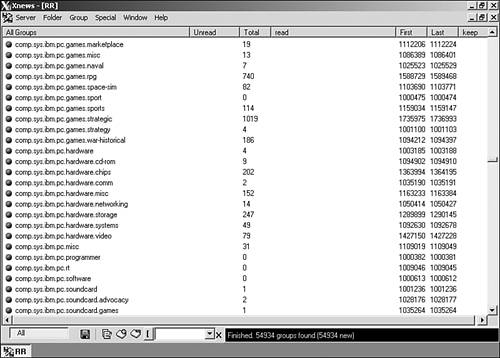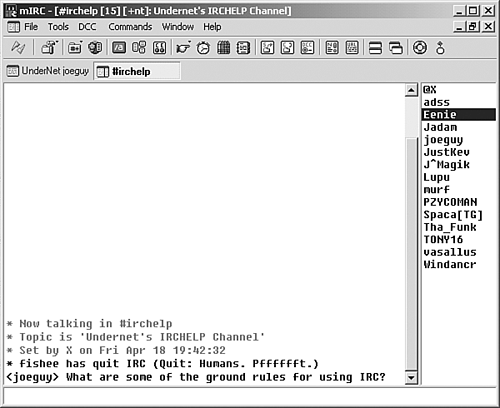Other Internet Onramps
| Although email and the Web predominate user access to the Internet, other tools can be used to access various information repositories on the Net. One of the earliest TCP/IP protocols used for connecting one computer to another was the Telnet protocol. Very useful in the Unix environment, Telnet can be used to connect to another computer and access resources on that computer. Although Telnet is still used a great deal to configure and monitor routers and switches on large internetworks, it isn't used all that much to access the Internet. Two other protocols that can be used to access information on the Internet are NNTP and Gopher. A fourth Internet onramp is Internet Relay Chat, which provides a real-time discussion venue . These three Internet onramps are discussed in the sections that follow. NewsgroupsNewsgroups have been around since 1979, when newsgroup servers were set up at Duke University and the University of North Carolina. Usenet , a network of news servers connected to the Internet, is still around today. Most news servers are run by educational institutions and large companies. Internet service providers also typically have their own news servers, and they choose which of the newsgroups available on the Internet to carry on their servers and offer to their subscribers. Information on news servers is broken into categories. Each subject area is called a newsgroup . Figure 14.9 shows the Xnews newsgroup client window. Xnews is a Windows-based freeware newsreader. Figure 14.9. Thousands of newsgroups are available on Usenet. Newsgroups are kind of like an electronic bulletin board, where users can post or read messages. As with other information services on the Internet, newsgroups have a client and a server side. The TCP/IP protocol that allows the exchange of information from a newsreader (the client-side application) to a news server is the Network News Transfer Protocol (NNTP). NNTP uses TCP to negotiate a connection between the client newsreader and the news server. The client lets the server know which articles in a particular newsgroup it has already viewed , and only a list of new or unread articles will be provided to the client. Each posting in a newsgroup contains a header that provides the subject of the news post. It is the headers that are downloaded by the client from the server. When the header for a particular article is selected, the entire message is then uploaded from the server to the client. Users can respond to messages listed in a newsgroup or create new posts. Figure 14.10 shows a new message being created in Outlook Express. Figure 14.10. Newsreaders allow you to create and post messages to a news group . Many different news clients are available. Outlook Express, the email companion to Internet Explorer, also has the ability to act as a newsreader, as does Netscape Navigator. The Apache Server software available for Unix/Linux platforms can act as a news server, as can Internet Information Services, which is a service provided with Microsoft Windows server products such as Windows Server 2003. A number of standalone news server products also exist, such as the DNEWS Server. Tip
Internet Relay ChatOne of the "old guard" communication venues on the Internet is Internet Relay Chat (IRC). IRC first became available in the late 1980s. Many universities and other organizations host IRC servers. A client computer connects to an IRC server using an IRC client. IRC "conversations" are conducted on a particular channel. Channels are available for a variety of topics: everything from sports to movies to computer hardware. A number of IRC chat clients are available for download on the Web. Figure 14.11 shows the mIRC IRC client. The user has connected to the irchelp channel, which provides help on using IRC. Figure 14.11. IRC provides a real-time chat environment. All messages posted by users connected to the channel can be read by all users on the channel. Most IRC clients also provide the ability to "whisper" to a particular user during the session. Once the client software is installed on a computer, the client connects to any of a number of IRC servers (each client provides a list of default servers that can be used for the connection). Once connected to the IRC server, a user can browse the various channels available and connect to a particular channel. In retrospect the concept of online chats was an extremely important addition to the Internet. Proprietary chat clients from Microsoft, Yahoo!, and AOL have sprung up on the Web and provide real-time chat forums similar to those offered by IRC. An open-source product, Jabber, provides both an open-source server and a number of free Jabber clients that allow users to connect in an environment similar to Yahoo! chat and the other chat software available via the Web. The fact that Jabber's server is open source means that organizations can outfit their own communication server, making the chat environment available on an intranet or over the Internet.
|
EAN: 2147483647
Pages: 188



